Butte Booms
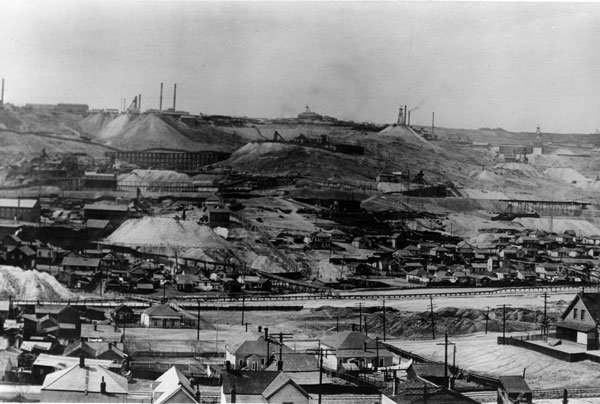
With the discovery of gold and other valuable minerals in Montana, development quickly followed. Trappers and explorers had been active in western Montana as early as the 1830s; however, white settlement of this western Montana would not become significant until future governor of Washington Isaac Stevens and his group, which included Lieutenant John Mullan, was commissioned by the U.S. government to start surveying for a transcontinental railroad to be built between Fort Walla Walla in Washington and Fort Benton in Montana on the Missouri River.
Originally commissioned to be a transcontinental railroad and then an army road, what came to be called the Mullan Road was completed late in 1860 in Fort Benton and was designated as Montana’s first interstate highway. The road was important for freight and travelers passing through the territory between mining camps, agricultural centers and other settlements. The Northern Pacific Railroad, the first transcontinental railroad linked to the Pacific Coast, was completed in 1883 near Gold Creek, Montana. With the advent of electricity and its related technologies- telephone, telegraph, electric light- Butte had become the largest city between Minneapolis and San Francisco by the turn of the 20th century.
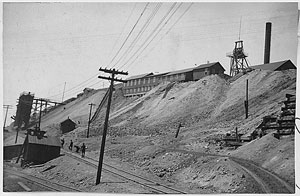
By that time, there were at least a dozen concentrators, smelters and precipitation plants on Silver Bow Creek just below the Butte Hill, where the urban center of the city of Butte was taking shape.
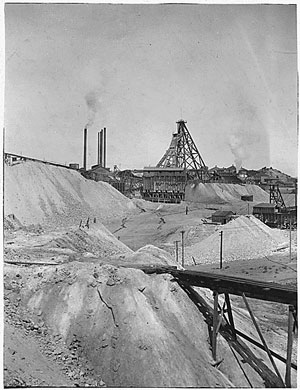
Underground mines, marked by the large black headframes still seen today, were scattered throughout the city. The city boomed as demand for copper soared. Thomas Edison made the first public demonstration of his incandescent light bulb on December 31, 1879, in Menlo Park, New Jersey, and the race to electrify America and the world was on.
Copper from the Butte mines and elsewhere was in high demand for its role as a conductor. With American industry now involved in the electrification process, by the 1890s the mining interests of Butte became consolidated under the three Copper Kings: Marcus Daly, William Clark, and Augustus Heinze. Copper King William A. Clark’s Colorado Smelter and Butte Reduction Works were the largest. Silver Bow Creek was also heavily impacted by sewage discharged by the city of Butte starting in the 1870s. The discolored water in the creek earned it the local nickname of “Copper Creek.”
The Copper Kings
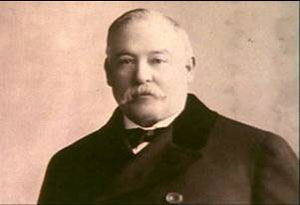
As mining interests in the Butte area were consolidated, the copper mines, smelters and surrounding industry came to be dominated by the three Copper Kings of Butte. The Copper Kings were highly influential in the early development of the area and in shaping of the events that took place throughout Montana. The first two Copper Kings, Marcus Daly and William Clark, became active in the Butte area in the 1870s.
Daly arrived in 1876 representing the Walker Brothers, entrepreneurs from Salt Lake City. His mission was to inspect the Alice Mine for possible purchase. Daly purchased and successfully the mine. The town of Walkerville, which still overlooks the city of Butte from the north, sprang up around the Alice and the other mines in the area. In 1880, Daly sold his interest in the Walkers’ properties and purchased the Anaconda Mine. He did so with the support of east and west coast investors, including George Hearst, the father of media mogul William Randolph Hearst.
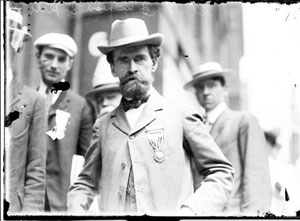
With money earned in the Bannack and Virginia City gold strikes, William Clark established his First National Bank in Deer Lodge in the 1870s. Using the financial stability of his bank as a springboard, Clark bought up many of the Butte mines in the 1870s, at the time the Butte gold rush had subsided and mine and property prices were low. He soon built a mining empire in Butte, complete with smelters and processing plants, and also began branching out in his investments, mainly in the Missoula area.
The mining operations of Clark, Daly and others churned furiously 24-hours a day, 365 days a year, taking copper ore out of the ground and putting it to use as the industrial revolution’s most high tech commodity: the transmission of electricity. The mines, mills and smelters of Butte and Anaconda were producing more copper than any one place on the planet, accounting for more than 1/3 of the United States supply when demand was at its peak.

As mining continued to boom, the influence of the Copper Kings was felt far beyond Butte. Resources in the Milltown and Missoula area, particularly timber, were critical for the successful expansion of their operations in Butte. In the 1890s, when health concerns and a scarcity of water and timber drove smelting out of Butte, smelters were constructed in Anaconda and Great Falls.
In 1882, the Northern Pacific Railroad Company in partnership with Marcus Daly formed the Montana Improvement Company, later the Big Blackfoot Milling Company. The company’s focus was to cut western Montana timber, mill it and sell it for and along the Northern Pacific line. Daly invested, recognizing the demand for timber in Butte’s underground mines and for fuel in his smelters in Anaconda.
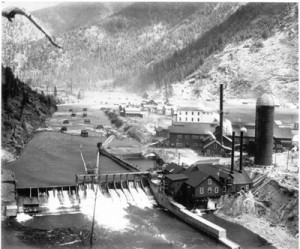
They constructed a mill at Bonner on the Blackfoot River, which Daly’s Anaconda Company owned outright by the early 1900s. The dam at the site, known as the Stimson Dam, was removed in the fall of 2006 as part of the Milltown remediation and restoration project.
William Clark also was heavily involved with the industrial development of western Montana. The city of Missoula was second only to Butte in Clark’s financial dealings in Montana. There he owned a lumber mill, a flour mill, the water and electric utilities and the street car system. In 1905 his Clark-Montana Realty began development of the Milltown Dam hydroelectric project and a new adjacent lumber mill.
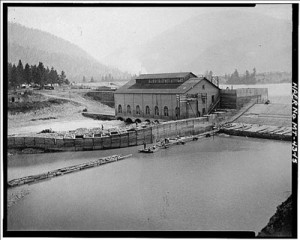
The Milltown Dam was constructed between 1905 and 1908, using the standard “timber crib” technology of the day. Ten-inch timber beams were driven into the riverbed and crossed to form “cribs”, which were then filled with large rock and soil. The Milltown generated electricity to supply Bonner, Milltown and Missoula, including the electrified street car system Clark owned, as well as enough power to run a large lumber mill. Clark’s Western Lumber Company, which was formed in 1892 in Missoula with mills downstream several miles, moved its headquarters from Lothrup upstream to Milltown in 1910 because of the power and water readily available from the new dam.
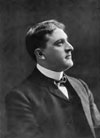
In 1899, Daly teamed up with two principals of John D. Rockefeller’s Standard Oil, William Rockefeller and Henry H. Rogers, to create the Amalgamated Copper Mining Co., one of the largest trusts of the early Twentieth Century. A third Copper King, F. Augustus Heinze, entered the picture. Heinze, who came to Butte from New York in 1889 as a mining engineer, used questionable business practices and lawsuits to acquire Butte mining interests, fighting the dominance of Amalgamated. When Daly died in 1900, John D. Ryan, a local banker, finally convinced Heinze to sell out, creating the monopoly Amalgamated sought. By 1910, the Company had changed its name to the Anaconda Copper Mining Company. The Company, as it was known locally, dominated Butte and the landscape of Montana politics and business for the next 70 years.
Click here to return to the main History page
Click here to continue to 1900s: Environmental Consequences
